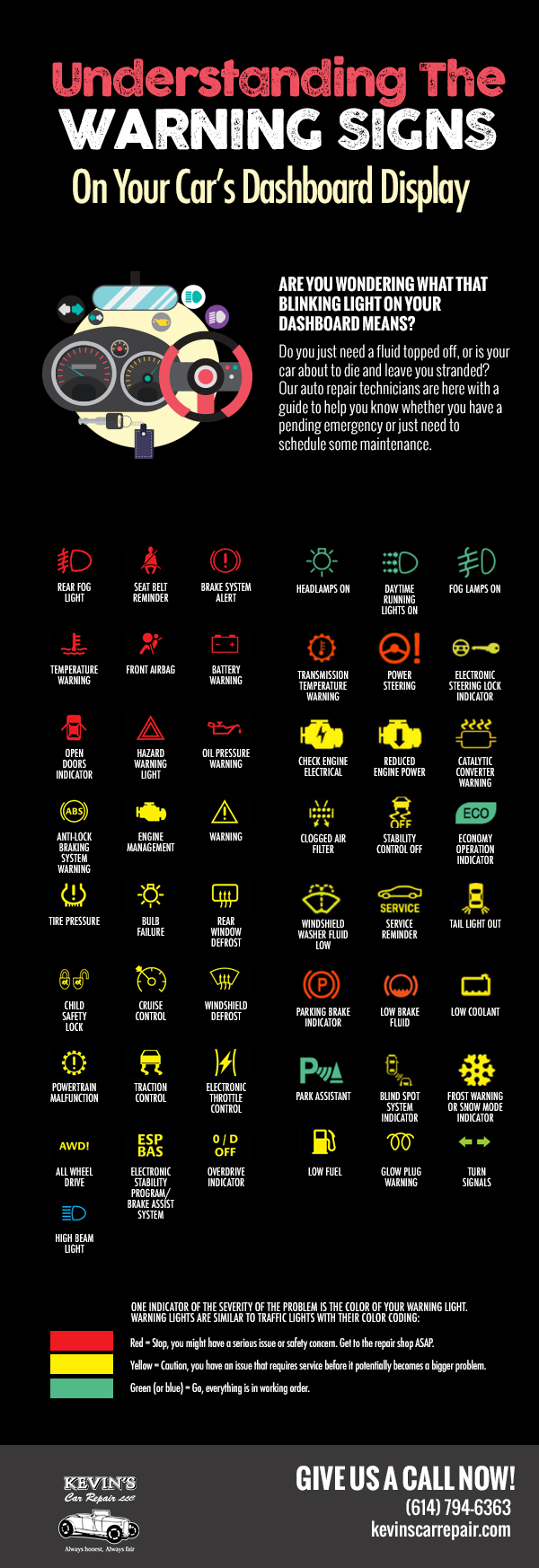Analyzing Your Car'S Alert Lighting: Their True Effects
Analyzing Your Car'S Alert Lighting: Their True Effects
Blog Article
Produced By-Faulkner Alvarado
When you're behind the wheel, those glowing warning lights on your control panel can be a little bit difficult. Do you know what they're attempting to inform you concerning your car's wellness? Comprehending the importance of these lights is vital for your safety and security and the longevity of your vehicle. So, the next time one of those lights pops up, wouldn't you wish to analyze its message accurately and take the necessary steps to resolve it?
Common Warning Lighting and Interpretations
Determine usual caution lights in your automobile and recognize their meanings to guarantee safe driving.
https://brakes41728.blue-blogs.com/38166078/10-crucial-tips-for-picking-the-suitable-automobile-repair-shop-in-your-area of the most typical caution lights consist of the check engine light, which signals issues with the engine or emissions system. If this light begins, it's vital to have your vehicle inspected without delay.
The oil stress cautioning light indicates reduced oil stress, calling for instant interest to avoid engine damage.
A blinking battery light could suggest a defective charging system, possibly leaving you stranded if not dealt with.
The tire stress tracking system (TPMS) light notifies you to low tire stress, influencing vehicle stability and gas performance. Neglecting this can result in harmful driving conditions.
The abdominal muscle light indicates a trouble with the anti-lock braking system, compromising your ability to stop swiftly in emergencies.
Finally, the coolant temperature level cautioning light warns of engine overheating, which can cause serious damage otherwise dealt with swiftly.
Comprehending these common warning lights will certainly help you deal with problems immediately and maintain safe driving problems.
Significance of Prompt Interest
Comprehending the common caution lights in your car is only the primary step; the importance of immediately addressing these warnings can't be highlighted enough to guarantee your safety and security on the road.
When a caution light brightens on your control panel, it's your automobile's method of communicating a possible problem that needs focus. Disregarding these warnings can bring about more severe issues in the future, endangering your safety and possibly costing you much more in repairs.
Prompt interest to alerting lights can stop break downs and crashes. For example, a flashing check engine light could indicate a misfire that, if left unattended, could trigger damages to the catalytic converter. Addressing this promptly can save you from a pricey repair work.
Likewise, a brake system warning light could indicate low brake liquid or worn brake pads, essential elements for your safety and security when driving.
DIY Troubleshooting Tips
If you observe a caution light on your control panel, there are a few DIY repairing pointers you can attempt prior to looking for specialist assistance.
The primary step is to consult your automobile's guidebook to comprehend what the details caution light suggests. In some cases the concern can be as straightforward as a loose gas cap causing the check engine light. Tightening the gas cap might resolve the trouble.
graphene coating is a reduced battery, which can trigger different alerting lights. Inspecting the battery connections for corrosion and guaranteeing they're safe could repair the issue.
If a caution light lingers, you can attempt resetting it by separating the vehicle's battery for a couple of mins and after that reconnecting it. In addition, checking your vehicle's fluid levels, such as oil, coolant, and brake liquid, can assist repair advising lights associated with these systems.
Conclusion
Finally, understanding your automobile's caution lights is important for keeping your automobile running efficiently and safely. By immediately addressing these signals and knowing what they indicate, you can stay clear of pricey repair work and potential breakdowns.
Keep in mind to consult your car's manual for particular information on each advising light and do something about it as necessary to make sure a trouble-free driving experience.
Keep informed, stay secure when driving!
